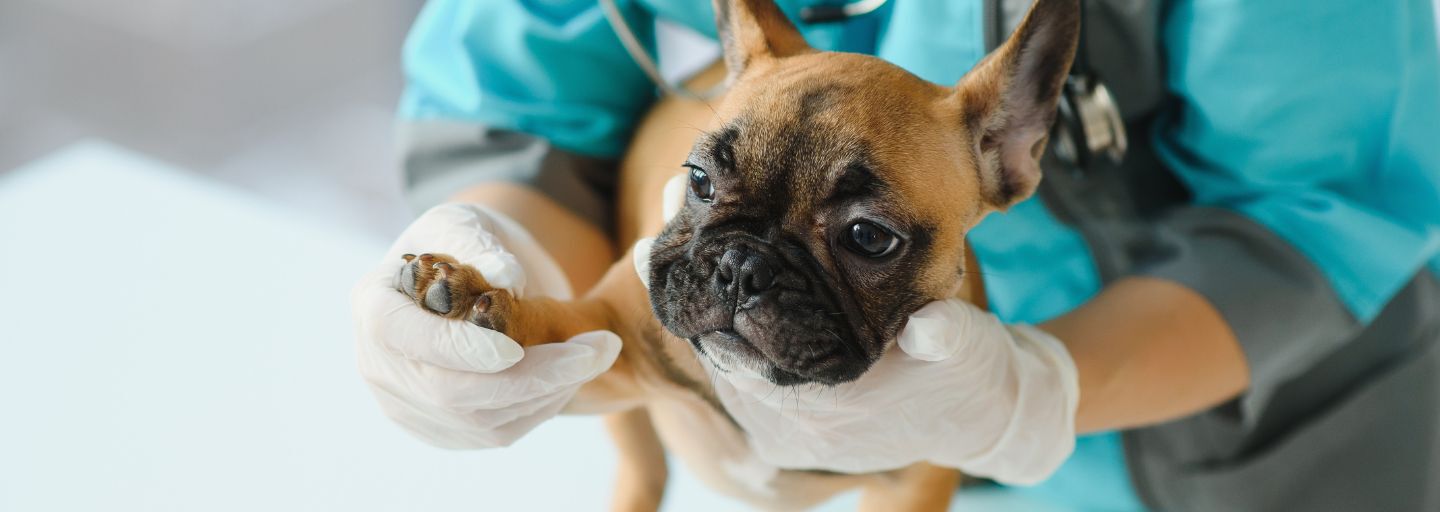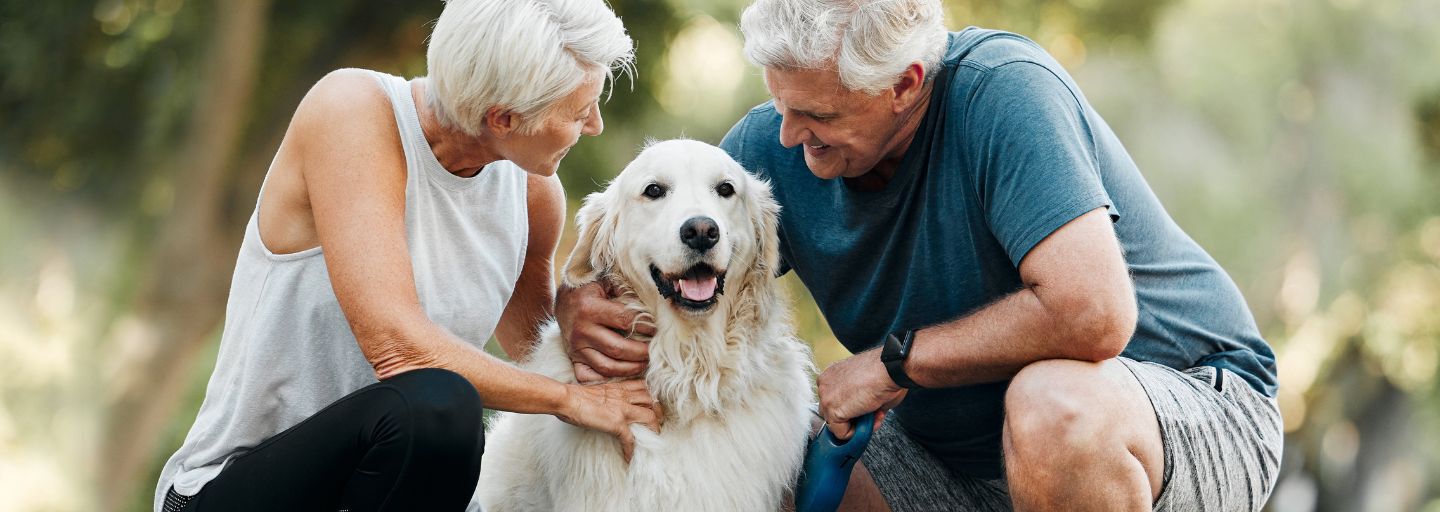As our furry companions age, they may experience joint issues that can impact their mobility and overall quality of life. Joint health is a crucial aspect of caring for our dogs, and there are several steps we can take to support their joint health and well-being.
Understand the Importance of Joint Health
The joints in a dog's body, such as the hips, elbows, and knees, play a vital role in their mobility and flexibility. Healthy joints allow dogs to run, jump, and play without discomfort. However, as dogs age, the cartilage that cushions their joints may start to wear down, leading to conditions like arthritis or joint degeneration. It's important to prioritize joint health to ensure that our dogs can enjoy an active and pain-free life.
What Age Do Dogs Start Experiencing Joint Pains?
Joint pains and issues can affect dogs of various ages, but they are more commonly observed in older dogs. However, it's important to note that the age at which dogs start experiencing joint pains can vary depending on several factors, including breed, size, genetics, and overall health. Here are some general guidelines regarding when dogs may start experiencing joint pains:
- Large and Giant Breeds: Large and giant breed dogs are more prone to joint issues, such as hip dysplasia and osteoarthritis. These breeds include Great Danes, Labrador Retrievers, German Shepherds, and Saint Bernards, among others. Joint problems in these breeds can start as early as 1 to 2 years of age, although symptoms may not be apparent until later in life.
- Medium and Small Breeds: Medium and small breed dogs generally have a lower risk of developing joint issues compared to larger breeds. However, they can still experience joint problems, especially as they age. Signs of joint pains may become noticeable around 6 to 8 years of age in these breeds. It's important to note that individual dogs within these breeds may vary in terms of when they start experiencing joint pains.
- Toy and Miniature Breeds: Toy and miniature breeds, such as Chihuahuas, Pomeranians, and Yorkshire Terriers, are less prone to joint issues compared to larger breeds. These dogs may start experiencing joint pains later in life, typically around 8 to 10 years of age. However, it's important to monitor their joint health and provide appropriate care as they age.
- Genetics and Health Factors: Genetics play a significant role in a dog's susceptibility to joint issues. If a dog's parents or close relatives have had joint problems, there is a higher likelihood that they may also develop similar issues. Additionally, certain health conditions, such as obesity, can put extra strain on a dog's joints and increase the risk of joint pains at a younger age.
While the above age ranges provide a general idea, it's important to remember that every dog is unique. Some dogs may start experiencing joint pains earlier or later than expected. Additionally, certain factors, such as injuries or trauma, can also contribute to the development of joint issues at any age.
How to Keep Dog’s Joints Strong and Healthy
- Provide a Balanced Diet: A balanced diet is essential for maintaining overall health, including joint health. Ensure that your dog's diet includes high-quality protein, healthy fats, and a variety of fruits and vegetables. Omega-3 fatty acids, found in fish oil or flaxseed, can help reduce inflammation and support joint health. Consult with your veterinarian to determine the best diet for your dog's specific needs.
- Maintain a Healthy Weight: Excess weight can put additional strain on a dog's joints, leading to increased wear and tear. Maintaining a healthy weight is crucial for joint health, especially for breeds prone to joint issues. Ensure that your dog receives regular exercise and monitor their calorie intake to prevent obesity. If your dog is overweight, consult with your veterinarian to develop a weight loss plan.
- Regular Exercise: Regular exercise is important for keeping your dog's joints strong and flexible. Low-impact exercises like walking, swimming, or gentle play can help maintain joint mobility without putting excessive stress on their joints. Avoid high-impact activities or exercises that involve jumping, especially for dogs with existing joint issues. Consult with your veterinarian to determine an exercise routine that suits your dog's age, breed, and overall health.
- Joint Supplements: Joint supplements can provide additional support for your dog's joint health. Glucosamine and chondroitin are commonly used supplements that help maintain cartilage and reduce inflammation. These supplements can be found in various forms, including treats, chews, or powders. Consult with your veterinarian to determine the appropriate dosage and type of joint supplement for your dog.
- Provide Comfortable Resting Areas: Creating comfortable resting areas for your dog is essential for their joint health. Provide soft bedding or orthopedic beds that offer support and cushioning for their joints. Avoid placing their bed in drafty areas or on hard surfaces. Additionally, consider providing ramps or stairs to help your dog access elevated surfaces, reducing the strain on their joints.
- Regular Veterinary Check-ups: Regular veterinary check-ups are crucial for monitoring your dog's joint health. Your veterinarian can perform a thorough examination, assess their joint function, and detect any early signs of joint issues. They may recommend X-rays or other diagnostic tests to evaluate joint health. Early detection and intervention can help manage joint conditions more effectively.
- Adapt the Environment: Make adjustments to your dog's environment to minimize joint stress. Provide non-slip surfaces, especially on slippery floors, to prevent accidental falls. Use ramps or steps to help them access higher surfaces like beds or sofas. Avoid activities that involve excessive jumping or running on hard surfaces.
- Massage and Physical Therapy: Massage and physical therapy techniques can help improve joint mobility and reduce muscle tension in dogs with joint issues. Consult with a professional animal massage therapist or a veterinarian trained in physical therapy to learn appropriate techniques for your dog's specific needs.
Be Attentive to Signs of Joint Issues
It's important for dog owners to be aware of the signs that may indicate joint issues in their furry companions. Detecting joint problems early can help ensure timely intervention and management. Here are some common signs to watch out for:
- Limping or Favouring a Limb: If you notice your dog limping or favouring a particular limb, it could be a sign of joint discomfort. They may hesitate to put weight on the affected limb or exhibit a noticeable change in their gait. Limping can occur intermittently or persistently, depending on the severity of the joint issue.
- Stiffness and Difficulty Moving: Joint problems can cause stiffness, making it challenging for dogs to move freely. You may observe that your dog has difficulty getting up from a lying position, climbing stairs, or jumping onto furniture. They may exhibit reluctance or hesitation when engaging in physical activities they once enjoyed.
- Decreased Activity Level: Dogs with joint issues may become less active or show a decline in their usual energy levels. They may be less interested in playing, going for walks, or participating in physical activities. This change in behaviour can be a result of joint pain or discomfort.
- Changes in Behaviour: Joint pain can cause behavioural changes in dogs. They may become irritable, restless, or exhibit signs of aggression when touched or approached. Dogs may also become more withdrawn or seek solitude as a way to cope with their discomfort.
- Swelling or Heat around Joints: Inflammation in the joints can lead to swelling or the feeling of warmth around the affected area. Gently palpate your dog's joints, such as the hips, knees, or elbows, to check for any abnormal swelling or increased temperature. However, be cautious when examining your dog's joints, as they may be sensitive to touch.
- Licking or Chewing at Joints: Dogs may instinctively lick or chew at their joints in an attempt to alleviate discomfort. Excessive licking or chewing can lead to skin irritation or the development of hot spots. If you notice your dog excessively grooming a specific joint, it may indicate joint pain or irritation.
- Changes in Appetite: Joint issues can sometimes cause a decrease in appetite or changes in eating habits. Dogs may show a reduced interest in food or exhibit reluctance to eat due to pain or discomfort. However, it's important to note that changes in appetite can also be indicative of other health issues, so it's essential to consult with your veterinarian for a proper diagnosis.
If you observe any of these signs in your dog, it's crucial to consult with your veterinarian promptly. They can perform a thorough examination, conduct diagnostic tests if necessary, and recommend an appropriate treatment plan. Early intervention can help manage joint issues more effectively and improve your dog's quality of life.
Remember, each dog is unique, and the signs of joint issues may vary depending on the severity and location of the problem. By staying vigilant and attentive to any changes in your dog's behaviour or mobility, you can provide them with the necessary care and support to maintain their joint health, ensuring they can enjoy an active and pain-free life for years to come.







